Key Components of a Sustainable Safety Culture
1. Lifecycle Management Sustainable Safety requires a comprehensiveprocess to implement and manage the safety lifecycle of the asset. IPShas skilled specialists to specify, verify, validate and commissionsystem designs. IPS offers a full set of lifecycle services thatfollow a continuous process to manage change and ensure the systemsare always operating in accordance with the original design criteria.Our electronic document management services utilize wirelesstechnology to provide system and procedural documentation on demandwhile ensuring the information is always current. We have skilledspecialists who can help to design solutions, which have proven toreduce unplanned outages by 95%.
2. Safety Instrumented System Fundamental to the success of aSustainable Safety culture is the Safety Instrumented System (SIS)that performs the critical safety functions such as Emergency ShutDown (ESD), Fire and Gas protection (F&G), Burner Management (BMS) andHigh Integrity Protection (HIPS), as well as critical controlfunctions such as Turbo Machinery Control (TMC). IPS Triconex has thelargest SIS installed base with over 800 million hours of safeoperation and our InFusion technology interfaces to all major SISequipment, allowing for integration of traditionally disparate systemsinto a single safety domain. Our approach maintains the operationalindependence and integrity of the safety system while allowing theplant-wide integration of critical information.
3. Instrumentation Safety enabled field devices and instruments thatare more intelligent are reducing the need to send people to thefield. This keeps personnel away from dangerous locations, removeshuman error and reduces the cost of maintenance. IPS, a leadingsupplier of field devices, has a broad range of safety instrumentationto monitor the entire loop from sensor to actuator. Maintenanceoperations can schedule and conduct non-disruptive partial stroketesting within the tightest confines of plant operations. Test logsdocument compliance against internal and external benchmarks. Advanceddiagnostics facilitate trip prevention and communicate maintenancealerts. Our TüV certified transmitters and valve positioners aredesigned to IEC61508 for use in safety critical applications.
4. Diagnostic Monitoring Confidence in the operational effectivenessand the correct functioning of the installed safety systems isessential to a successful Sustainable Safety program. Using theembedded automatic diagnostic features of the safety systems,instrumentation and control elements increase this confidence andallow plant personnel to focus on production. IPS uses data derivedfrom the testing and diagnosis framework to automatically identify theappropriate communication strategies and coordinates the interactionof the personnel communications, asset management and maintenancefunctions.
5. Loop Management The integrity and effectiveness of each SafetyInstrumented Function (SIF) is paramount to the safety of the asset.IPS experts provide ‘offline’ services for the design of each SIF,including device selection, SIF calculations and SIF validation. Oncethe SIF is operational, our online loop SIL monitor provides dynamicfeedback on the performance of the SIF to demonstrate that it isoperating in accordance with the design parameters.
6. Inhibit & Bypass Management In order to highlight significantdeviations from the normal operational state and adjust the onlineplant safety case, a robust management system is required to monitor,record and report the status on all inhibit events and overrideconditions. This allows for handover shift reports and KPIs to detectpatterns and trends, as well as status reports identifying andexplaining the application of a bypass. It also enables automaticremoval of specified bypasses after a configurable period and adviseswhen the plant achieves a steady operational state. The IPS Inhibit &Bypass Management function communicates with all electronic systems,facilitates the systematic recording of events from other systems andprovides a formal rule based interpretation of the overall plantinhibit condition to initiate reports and display the operationalstatus of the plant emergency systems.
7. Alarm Management Alarms are often the first layer of protection andprovide the first indication that there is a potential unsafecondition on the site. Too many process alarms diminish the integrityof the alerts and the effectiveness of the operator response.Sustainable Safety programs utilize an effective and efficient alarmmanagement system that promotes both safety and performance. Alarmrationalization based on industry standards applies layers ofprotection to link the alarm priority with the time required toeffectively respond to an alarm before the plant shuts down. Thisresults in a reduction in nuisance trips, allowing operators to takeaction on every alarm.
8. Asset Management Asset management extends to all the criticalassets and processes within the environment that contribute to theperformance of the plant and ultimately to the performance of thebusiness. Specifically, the Sustainable Safety program data collectedfrom the Asset Management system is integrated into the overall plantsafety view. This allows the safety envelope model to be modified andthe plant safety dashboard to be updated to give a real-time measureof the overall integrity of the plant. The IPS Enterprise AssetManagement solution integrates Condition Management (CM), ComputerizedMaintenance Management System (CMMS), Condition Based Maintenance(CBM) and Reliability Centered models for Operations and Maintenance(RCO/RCM). This suite of software and services goes beyond traditionalasset management and provides the relevant asset intelligence requiredfor planned maintenance.9. Mobile Solutions A fundamental challenge in managing the safeoperations of any production enterprise is the ability to traceablymanage human activity within the physical operation. Mobile solutionscombines state-of-the-art wireless technology with a managed workflowthat validates and tracks that human based activities have beencarried out, ensuring procedural integrity with traceability. Whencombined as part of a sustainable safety program, regulatoryprocedures, inspections and other activities can be logged andincorporated as a holistic safety strategy. Whilst traditional controlsystems and safety designs anticipate identified hazards,statistically, human error has been attributed as the common cause formany catastrophic events. The mobile solution suite addresses thischallenge guarantying procedural integrity for human activity andserves to close the loop around many "stranded" assets that are notintrinsically monitored by traditional systems.
10. Asset Simulation Robust simulation and modeling tools are used toverify and validate the design and any changes prior to theimplementation on a live plant. This ‘check’ helps confirm that thesafety system mitigates the risks it was designed for while ensuringthe solution is fit for purpose and economically viable. IPS offers acomprehensive suite of modeling tools ranging from predictive controlto online optimization. These tools help you improve your processprofitability by enhancing quality, increasing throughput and reducingenergy usage and waste.
11. Operator Training Sustainable Safety is focused on removing humanerror or people from the process and potentially hazardous situations.This requires enhancing the skills and competency of the people whooperate the plant to respond to stresses and situations. Similar totraining a pilot, safety simulation can run "what if" scenarios andtesting to train operators how to effectively respond in alarmedconditions. IPS offers operator training simulators that emulate theplant environment, linking process simulation models with physical-spatial models to create virtually any scenario that a user couldencounter in real life. Our Immersive Virtual Reality Processtechnology can create a three-dimensional computer-generatedrepresentation of either a real or proposed process plant. Via astereoscopic headset, users enter a totally immersive environment inwhich they can move through the plant in any direction. The ability tosimulate complex processes in connection with virtual actions allowsthe user to directly experience an environment that changes over time,making it more effective at transferring skills learned in training tothe work environment.
12. Personnel Location The personnel location system is a vital partof plant emergency training allowing simulation of unsafe events atany part of the plant and monitoring the personnel response tooptimize the safety training procedures. Using an integrated personneldetection and alert system as part of the plant Sustainable Safetyprogram greatly reduces the impact of any plant incident because youhave real-time knowledge of personnel and a valid rules-based responseto any critical situation. IPS wireless solutions provide the directlink between the automatic process safety systems and the operationpersonnel. The platform allows tracking and communication with allpersonnel anywhere on site.
13. Real-Time Safety View Having a collaborative virtual environmentenables a global network to share information, expertise and knowledgefor a Sustainable Safety culture. It requires an integrated approachto provide real-time situational awareness and enterprise widevisibility to minimise business disruptions due to an incident,reduced security threats and improved emergency response resolutiontimes. IPS offers remote access to a real-time Safety View for anoverview of the plant to show how safely the plant is operating. Acontextual display is created by splitting the plant into safety zonesby plant assets and applying a color indication of coverage and risklevels. High level as well as detailed information help determine whatarea and what safety instrumented function is compromised and whetherthe asset can be restored into a safe operating state. Because thisinformation is available visually and remotely, it is possible to takethe information to the experts rather than vice versa, resulting insafer, more targeted event response.
14. Security Now, more than ever, the threat to the safe operation ofa plant can no longer be contained solely within the operation, as thethreat from external influence increases. The realities of terrorismand business disruption due to plant safety incidents are criticalconsiderations for plant managers. IPS solutions embrace a ‘defense indepth’ philosophy that applies multiple layers of cyber security toprotect against viruses, worms, other forms of malicious attack andphysical security (such as fences, barricades, guards and othermethods used to deter unwanted physical entry). As all of thesesystems become integrated into a single ‘safety domain’, the impact ofa malicious attack significantly increases if the attack issuccessful. Sustainable safety assurance incorporates awareness,assessment, policies and procedures as well as intrusion detection andprevention systems in a comprehensive security solution.
Saturday, November 21, 2009
Subscribe to:
Post Comments (Atom)








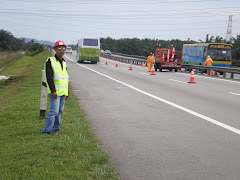





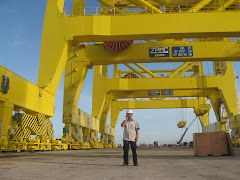



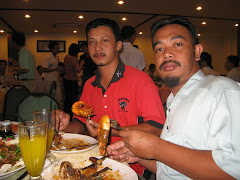
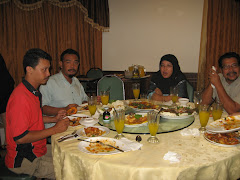
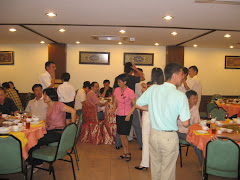






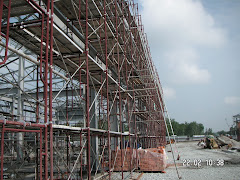
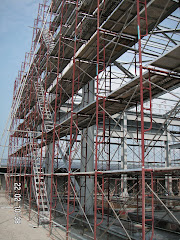


















No comments:
Post a Comment